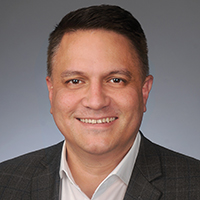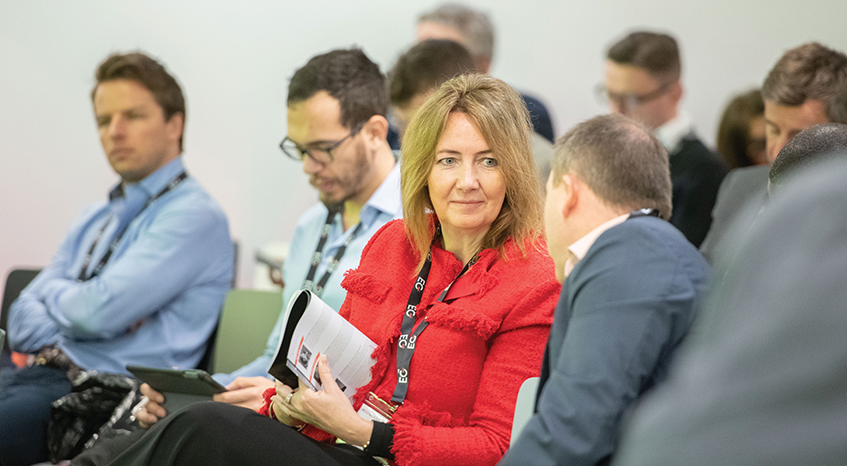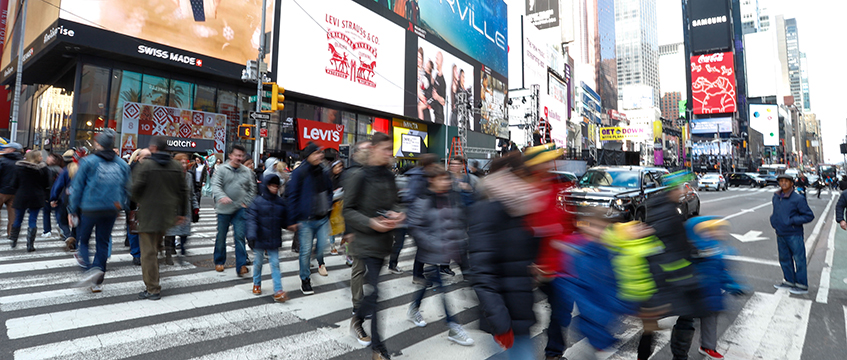From start-up founder to chief information officer of San Francisco and chief technology officer of New York to executive vice president of global cities for Mastercard, Miguel Gamino has had a view on “smart cities” – a term he insists should always be accompanied by the inverted commas given its sprawling and indefinable nature – from more angles than most.
He flew in from New York to deliver a keynote interview at Tech Live, where he revealed how his plethora of roles stand him in good stead when it comes to understanding what makes a people-centric city.
You have such a varied career history. Which move was the biggest culture shock for you?

The more difficult, or perhaps I should say interesting, journey was going from start-up into government, rather than from public to private sector.
I had all kinds of stereotypes in my head about what public service meant and what it might be like. In my start-up days, we actually wrote it into the business plan that we would not do business with government because I was so sceptical about its ability to move forward and make decisions.
What I learned when I embarked on my civic duty and became CTO of El Paso, Texas, and then San Francisco and New York was that there were a lot of very talented people there who were really trying to do good with decisions in front of them that were very grave and very important.
In my start-up days, the worst-case scenario was that we would lose money. In the public sector, if these people made a decision that worked well then people’s lives would benefit. But if they didn’t then people’s lives would suffer. The gravity of that responsibility soaked in for me. It really did. And I became a different person with a different appreciation for public sector life.
You led tech strategies for three cities as part of your career in the public sector. How did these roles vary?
My work for El Paso was all about making decisions to be efficient with investments and minimise the tax base – so it really was about efficiency.
San Francisco was particularly interesting because it has the reputation of being the innovation capital. So I would read that various media outlets had ranked us on innovation, and I would see San Francisco at the top because of venture capital that was raised there. That drove the city forward. But when I went from San Francisco to New York, I actually banned the word “innovation” because we had been getting a bunch of accolades just by virtue of being San Francisco and being in the right place at the right time.
There were a bunch of technologists around me that were doing great things that had had nothing to do with decisions being made in City Hall. And we wanted them to be working for us. We had to motivate people to give up stock options in major tech companies, so we decided to sell purpose, kind of in lieu of stock options. And it worked. We gave people the opportunity to have an impact and to make a difference.
We hired people away from Twitter, Amazon and Oracle because we gave them access to that ability to have a real impact. I think that’s really the takeaway from San Francisco – the conversations we had with the talent that changed their thinking about how they could do things for the greater good and how you get that buy in from government.
In New York, I had the ability to make big decisions and mobilise big budgets. So we had the resource, but we really needed to engage the private sector to protect the legacy of the things we wanted to do for the greater social good. Ultimately, if something is commercially viable in New York, the private sector will take care of the legacy over time.
New York really changed my perception of the relationship dynamics between the public sector and the private sector. It wasn’t just about a transactional public-private partnership. It wasn’t just access to capital. It was really about if we agree on the positive social impact and we agree on it in a way that’s commercially viable then that impact will continue, and it will even grow and have deeper and wider impact on society.
And so that’s when I really began to have, I would say, an appropriate understanding and appreciation for the relationship between the public and private sectors.

Let’s talk about your current role. You are heading up Mastercard’s City Possible programme. What is that, and how does it work to bring global cities together?
City Possible is Mastercard’s strategy for engaging with cities in a meaningful way. I always get asked why Mastercard is in the city space, and the answer to that question is simple: every mayor I have either worked for or spoken with is trying to do the same thing.
They’re trying to make their community better by making it safer, more connected and better taxed, with improved transportation and education systems. And all those things are pointing towards the same end goal, which is to make the city healthier and more vibrant and give people access to opportunity. So, in short, we want to help mayors accomplish those goals.
The strategy creates this network of cities and partners to drive the discussion and surface the real challenges. Having the cities themselves identify that indeed there is a mobility problem and that this problem is not unique but actually consistent across many cities is so helpful.
There is an 80:20 rule in my opinion across all cities. No matter what language you speak or what hemisphere you are in, 80% of the things you are trying to accomplish are the same worldwide.
So what is next for City Possible, and how has it been received by global cities?
In November last year, we announced that 16 cities had officially joined City Possible. I think we’re close to 25 cities now. That’s nearly doubled in three months, and that’s significant because it is evidence that this is meaningful to cities – that they’re finding value in engaging – and so we want to scale that in 2019.
We want to have more cities join the network; we want to have them engage with each other around real face-to-face opportunities; and we want to give them the ability to share solutions digitally online and in some kind of a trusted venue online that we’re building.
We want to find those opportunities that we can develop solutions for, and we want to find a few of those that test out to be viable. Then we need to find ways to scale them globally. And that’s what we will be working on in 2019.
‘Real estate must embrace change’
 COMMENT: Vanessa Lee Butz, chief executive and founder, District Technologies
COMMENT: Vanessa Lee Butz, chief executive and founder, District Technologies
My keynote address at the EG Tech Talk conference focused on two distinct viewpoints and challenged the audience to think about frictionless user experiences in our cities of the future.
My first perspective was around human-centred design, while the second focused on the myth that is “future-proofing”, certainly in the context that is used so frequently in the real estate industry. Technology is constantly changing, therefore “future-proofing” is merely becoming comfortable with this change and building infrastructure that is open to continuous change in technology, as our industry advances.
Human-centred design is the concept of focusing on the human perspective in everyday design challenges. What we design is not always what users actually want. Hence the need for a continuous feedback loop, to create unique user experiences that are key to establishing modern and future-proofed (in my definition) technologies.
Real estate developers are used to developing buildings that last 50 years and are very fixed in their asset nature. Software developers are constantly iterating code and pushing new features in a two-week sprint. This is the major mind shift that the real estate industry is going through, from seeing their assets as fixed 10- to 50-year products to products that can change consistently on a monthly or even daily basis – to improve the experience of the people in them.
The more the industry feels comfortable with the idea of change, the more future-proofed they will be. Future-proofing essentially means being comfortable with change, rather than building tech or assets that will never be obsolete, as this is not possible with the ever-changing software and tech landscape.
The best human-centred design solutions are consistently evolving through user feedback. The only constant is change, and this is a good thing for our cities and buildings.
To send feedback, e-mail emily.wright@egi.co.uk or tweet @EmilyW_9 or @estatesgazette











